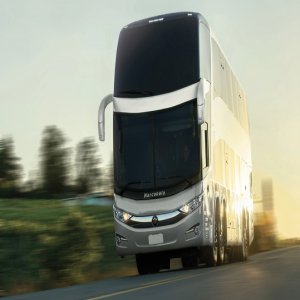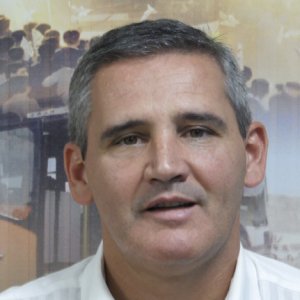Traversing the Road to Sustainable Mobility

STORY INLINE POST
Q: How was the Embarq network established, and what led to its arrival in Mexico?
A: Embarq started as an initiative for sustainable mobility and was created by the World Resources Institute, initially funded by the Shell Foundation in 2002. After that, Dr. Schipper and Dr. Keith developed a program that would establish Embarq offices wherever sustainable mobility was needed, knowing that this was the only way to have a real impact on local mobility development. Mexico was the first center to settle within the network, followed by Brazil, India, Turkey, and China.
Q: What encouraged a project like Metrobús to be implemented in Mexico City?
A: Due to the challenge that sustainable mobility poses in this region, we were able to begin our operations in partnership with the city’s government. We knew that fixing every problem in the city was an impossible task, so we decided to focus on specific projects during the initial phases, which led to the development of the Metrobús project. At that time, Mexico City’s Secretary of Environment and Natural Resources, Claudia Sheinbaum, was really interested in implementing a strong mobility program in Mexico City. This was a strong, new concept for the Mexican population, and we knew we had to build a sustainable partnership with the government. Furthermore, we needed to expand our communication with bus owners, which was no easy task. The biggest challenge was finding a single organization that could handle high vehicle demand, while providing proper logistics operations and a standardized maintenance process. In that respect, we were lucky to partner with RTP for Line 1’s initial stage. During the first day of operations, Line 1 transported over 220,000 people, showing instantly that Metrobús could help ease the transit problems in the city. The country has doubled its vehicle park which has been great for the automotive industry, but it has led to a city with more than 5 million cars in operation. Furthermore, when we revised the persistent air quality problems in the city, we concluded that 70% of them could be attributed to a faulty mobility program. This shows that, even though we have won some battles, the final goal is far from being reached.
Q: How open has the government been to the idea of expanding the Metrobús network?
A: The government has been incredibly open. As a matter of fact, we worked very closely together on the development of Line 1, which was then taken on by the government after its initial success. Since those first days, we have created many bus stations, which have given us access to a lot of variables for measuring the effectiveness of the project. One analysis has led to the conclusion that commuting times can be reduced by 30% to 50%, depending on the time of day. Similarly, polluting emissions can be reduced by the same amount, while the number of accidents have also decreased. In the past, the street of Insurgentes in Mexico City had an average of 800 accidents per year, but, once the Metrobús project was introduced, this was reduced to less than 130.
The premise of this whole project was to swap 20-year- old microbuses for new Metrobús vehicles. After that, we started to focus on other technological advancements. Our first units started with Euro III, and then we moved on to Euro V and EPA 07. Line 4 currently has hybrid buses, but implementing this kind of technology has proven to be quite a test. The down payment for cleaner technologies is much higher, and we have met some barriers that have not allowed us to fully commit to this new initiative. The rates we charge are fairly reduced and capital investment is still not common practice. Additionally, gas has become a very attractive fuel for buses, with the next generation most likely being a mixture of hybrid and gas models.
Q: How did CTS Embarq change the way in which Mexican transportation companies operate?
A: Part of CTS Embarq’s success comes from the way the Metrobús program was structured. The 236 different lines that previously ran through the city yielded their concessional rights in exchange for a stock share in CISA Company. They have now become partners and they receive part of the profits from this new program. Once Metrobús was established in Mexico City, we knew that other cities would want to follow the example. Although this may be true, many municipalities and state governments do not have the capital to make this kind of investment, which led to the creation of PROTRAM. This program has been operating for eight years and it funds up to 50% of the country’s infrastructure development in terms of mass transportation. PROTRAM has already developed projects in Chihuahua, Puebla, Monterrey, and the State of Mexico, and it currently has 40 other projects in the pipeline. Therefore, our new focus is to create programs directed toward proper vehicle financing strategies.
Q: How are your relationships with Reacciona por la Vida and ITDP helping to develop better mobility laws for the country?
A: Together, we are all focused on creating a framework that will promote a safer environment to increase the efficiency of our cities. We work directly with the local governments, but we must also work closely with the federal government in order to break any obstacles regarding national policies. The sustainable mobility movement has spread across the country and everyone wants to participate. Nevertheless, there is a strong dilemma between the development of infrastructure for light vehicles and the promotion of public transportation. The automotive industry is truly important for the national economy, but Mexico has yet to find the correct balance between these two segments. In countries like the Netherlands, there is a high rate of car ownership but people use their vehicles in a different way. Their cities are structured much more efficiently, so there really is no need for inner-city driving. Even Germany, a country with one of the strongest automotive industries, is looking for ways to make its cities friendlier for its citizens. Furthermore, there are cities like Helsinki that want to reach car independence in the next 20 to 30 years. However, this does not mean that cars will no longer run in the city, it only means that they will not be the first option for commuters. Single occupancy vehicles should not be the future, and countries are finding ways to change those trends by creating new investments for businesses that are closely related to sustainable mobility.
Q: What shift have you seen in the mentality of the Mexican population regarding sustainable mobility?
A: A growing number of young people think that Mexico needs to change its mindset. Many people are moving closer to their workplace, choosing biking or walking as their preferred method of transportation. There is also a clearer understanding that different methods of city transportation have varying impacts on the quality of the air. Companies like BMW, GM, and Audi are studying and investing in projects that will change this, which could indicate that we might see the transition sooner rather than later. Mexico might not lead the movement, but I truly believe that we can be a very active player in this paradigm shift. The real question is if this pace is quick enough for our quality of life to significantly improve.























